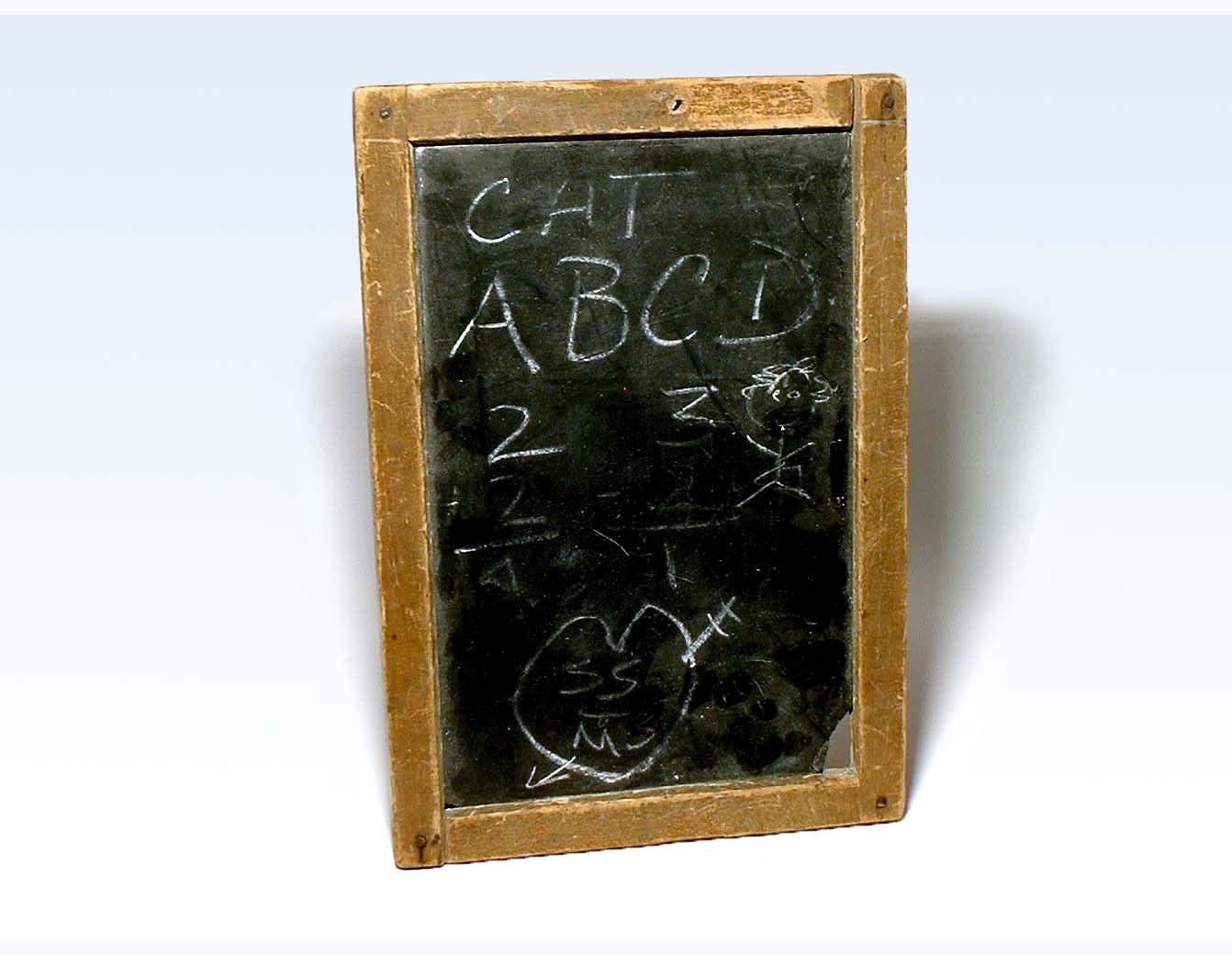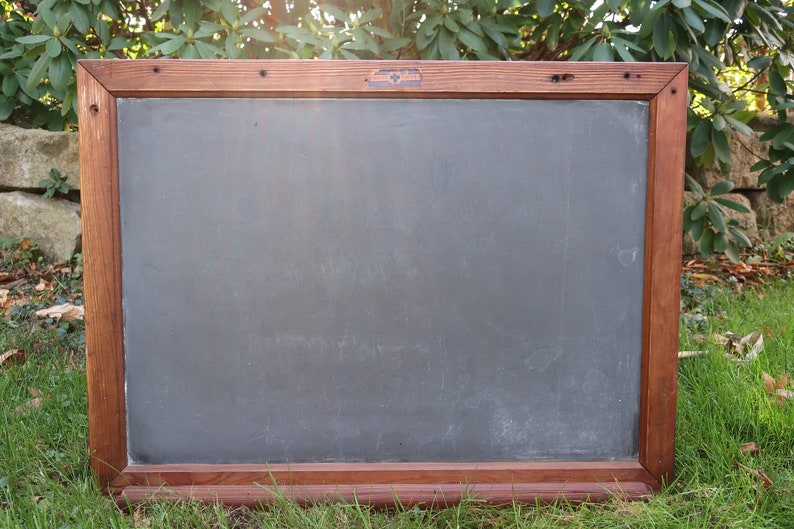

This seems like a lot of work, and it was, but it was also a lot of fun, and I only spent 500 bucks on about 40 square foot of countertop. Then used a small amount of black grout in the hairline space between the top and the edgeband. The final step, which could be optional, but I prefered the wet look, so I used a sealer called 511 H20+ Water Base sealer and followed the directions (important, as I left it on too long on a test strip and it got all splotchy). Once that dried, I did one final sanding, something more than 220, I can't remember, maybe 300? This was to make sure the big top and the top of the edgeband matched as close as possible in height and shade. I put some mortar around the edges, and placed the edgeband on, and used my larger table clamps to press it into the side, while also supporting from the bottom, and using shims under it to get it just right, so the the top lined up evenly with the countertop. Now I cut 2" strips of presanded chalkboard to use for the edgeband. I placed a couple boards across it and clamped the boards down to push everything into the mortar as evenly as possible. Once that dried, I put another coat of mortar on the tile backer, and laid the slate down on it. I also put backer board around the edges that would be finished.

Cut some tile backer board to the same size as the plywood and attached it to the plywood and mortar with tile backer screws.

I cut out 3/4" plywood for the base, then put on a coat of large tile mortar. If you're going to try this remember to add in the size of edge band and backer board, more on that later. With the measurements of the countertop + overhang, I cut the board to size. Then continued sanding with 120 grit, wash the dust off, 180 grit, wash, 220 grit, wash. I used a skillsaw with a diamond blade to cut the unusable edges off, like the parts that had drill holes and where the board was glued in. It took a couple sheets per board, but afterwards it was looking better already. Then sanding down using orbital sander and 80 grit paper. Once I got them home they looked a little rough, a lot of scratches, some paint and glue blobs, holes around the edges where it was attached, so the first step was scraping off surface stuff with a razor blade. I dont know if that was too much, but it seemed like a deal considering they were all the same. I contacted them and asked if I could buy half and pick them up, and we settled on $50 a piece. By chance I decided to check ebay just to get an idea on pricing because I knew shipping would be insane, but lo and behold someone was selling 10 3' x 5' chalkboards only 2 hours from my house. I searched craigslist and facebook marketplace for a while, but only found 1 or 2 used chalkboards, so I thought it wouldn't happen. So in my research I heard of people using slate chalkboards. But I had trouble finding a local dealer that wasn't super expensive, and ordering them online scared me, because I didn't want to order something I couldn't see.

I wanted to replace our laminate countertops with something nicer, and I love doing things myself, so I was immediately drawn to soapstone. There was a post on here recently about soapstone, and it reminded me I wanted to share my story of creating countertops from salvaged elementary school chalkboards.


 0 kommentar(er)
0 kommentar(er)
